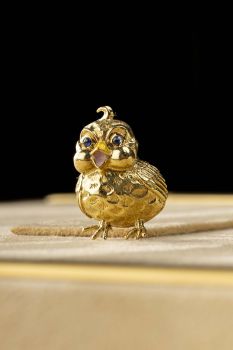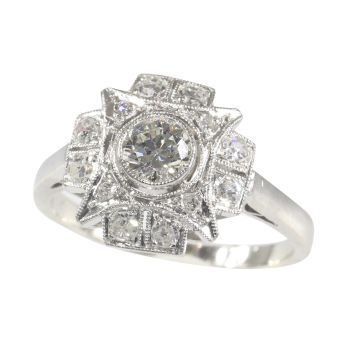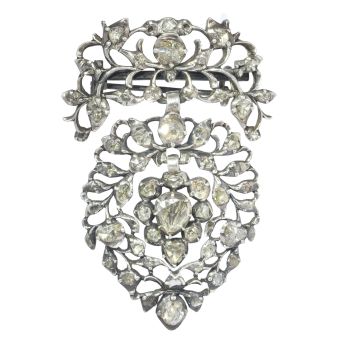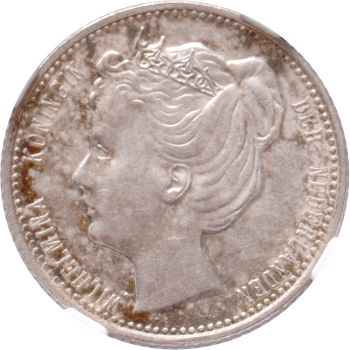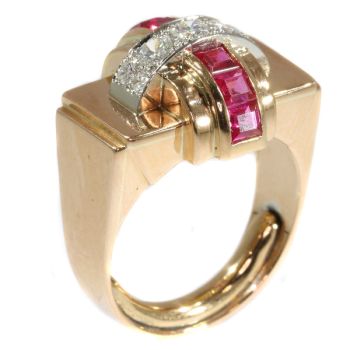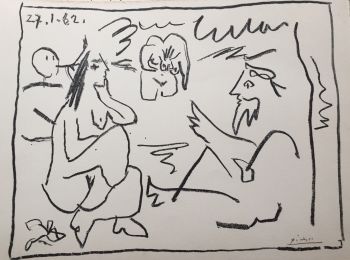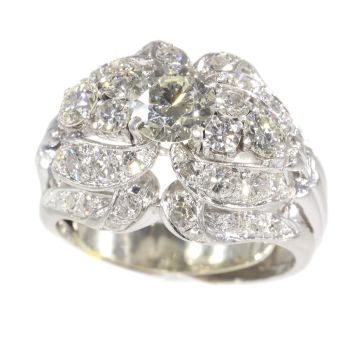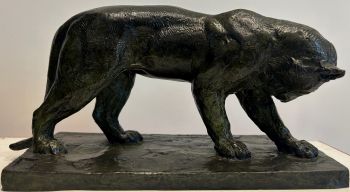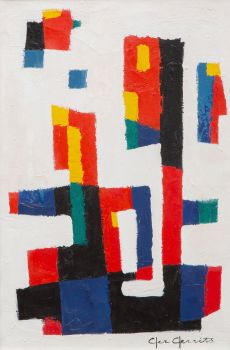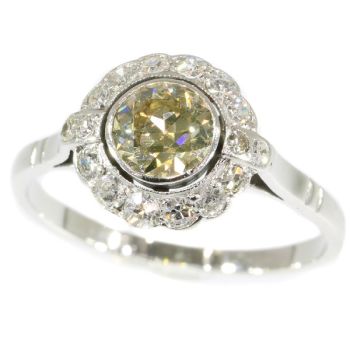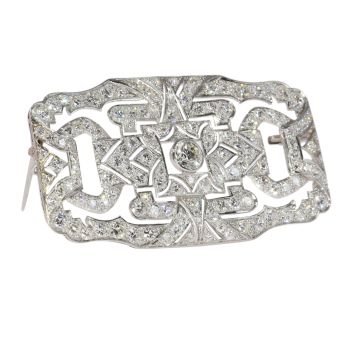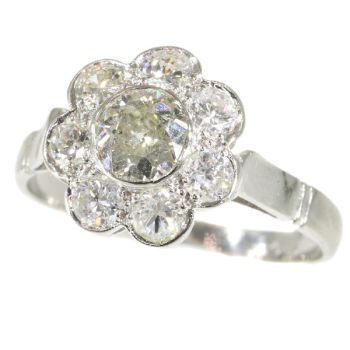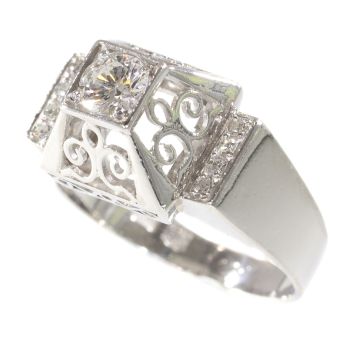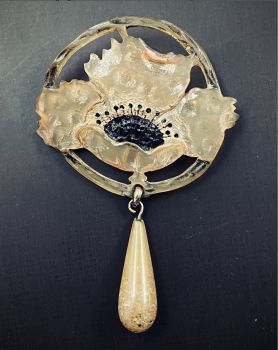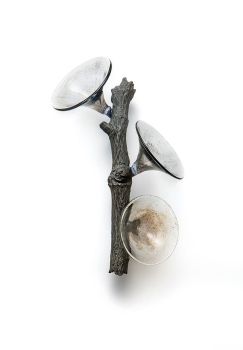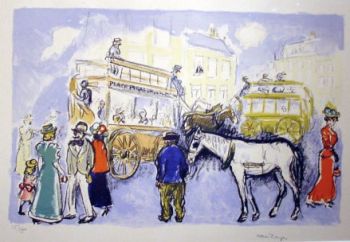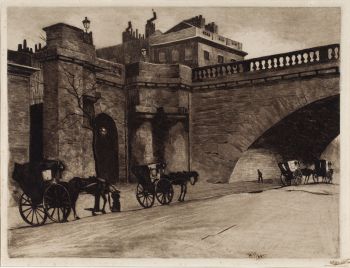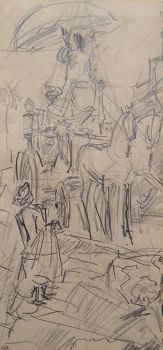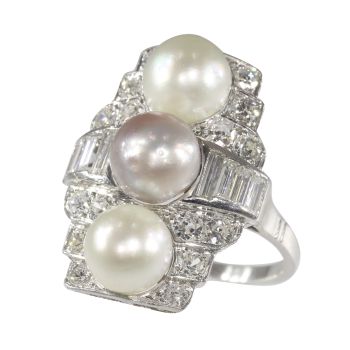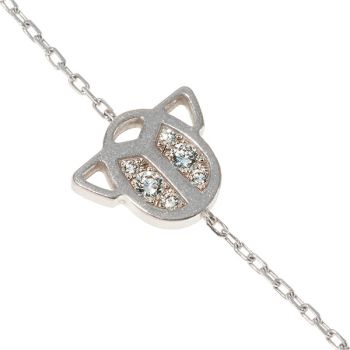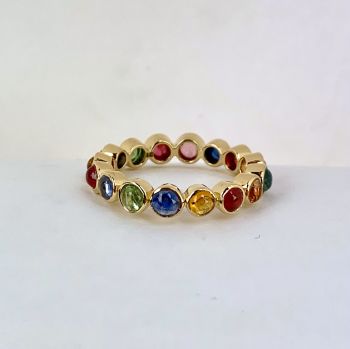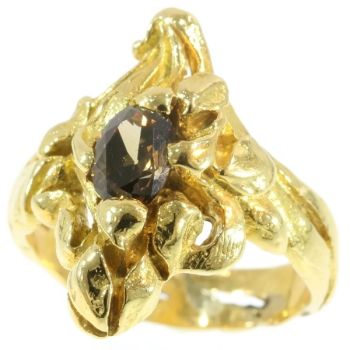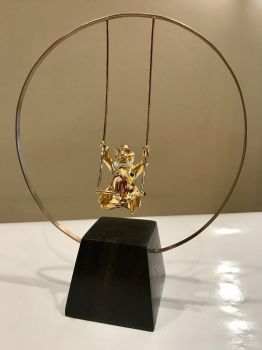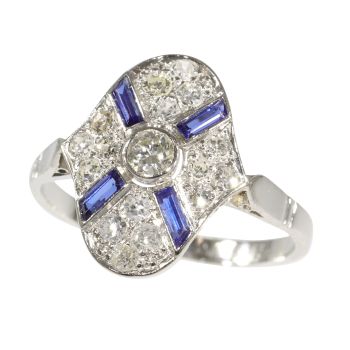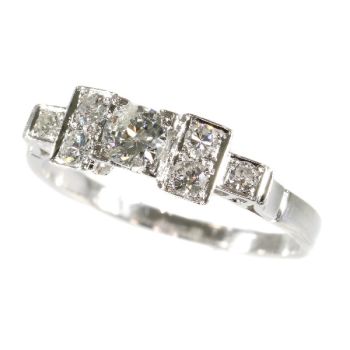Stravagante spilla in oro da carrozza tipica vintage anni Cinquanta Mellerio 1950
Artista Sconosciuto
DiamanteOroZaffiroPietra preziosa
€ 4.900
Adin Fine Antique Jewellery
- A proposito di opere d'arte
Looking forward to whatever road lying ahead, this Italian Fifties 18K gold carriage built in Mellerio style has the ability to carry you to any gala you could ever imagine.
As your fairy godmother, Adin promises that the coach won't change into a pumpkin, so even after midnight you can count on these white gold wheels to take you away in this yellow gold frame with diamonds and sapphires embedded inwhimsical opaline enamel as the white gold lanterns light your path. However, the driver's got a mind of his own, being a former horse as you know.
Antique jewelry object group: brooch
Condition: very good condition
- (more info on our condition scale)
Country of origin: Italy
Style: Vintage Fifties (of the twentieth century)
- See also: Fifties (of the twentieth century)or more info on styles
Style specifics: This type of jewelry is very specific for the fifties of the twentieth century. All sorts of animals were used as source of inspiration for the goldsmiths. Made in gold and decorated with enamel and precious stones, the result of their labour most ofthe times well-made, clever and cute.
Period: ca. 1950
- (events & facts of this era, poetry of this era, fashion of this era)
Source of inspiration: Although this jewel is NOT signed Mellerio it has all characteristics of atypical Mellerio jewel. Even more, this model is typically a Mellerio model.
Theme: carriage
Material: 18K bi-color (yellow and white) gold
- (more info on precious metals)
Technique: Enamelling is an old and widely-adopted technology. The ancient Egyptians applied enamels to pottery and stone objects. The ancient Greeks, Celts, Russians, and Chinese also used enameling processes on metal objects. Enamel is the colorful result offusing powdered glass to a substrate by firing, usually between 750 and 850 degrees Celsius. The powder melts and flows and hardens to a smooth, durable vitreous coating on metal, glass or ceramic. According to some sources, the word enamel comes fromthe High German word smelzan (to smelt) via the Old French esmail. Used as a noun, "an enamel" is a usually small decorative object, coated with enamel coating, such as a champlevé or a cloisonné (different techniques).
Extra information: Mellerio - François Mellerio (1772-1843) created the foundations of the current house, MELLERIO dits MELLER. Set up at 4, rue du Coq-Saint-Honoré (today rue Marengo), his establisment rapidly grew under the Empire, thanks to Empress Josephine who bought small items from him and attracted in her wake the Emperor's family, the new nobility and the old aristocracy standing together. In 1815 at the end of the Empire, he transferred the house to 22, rue de la Paix and in the following year went intopartnership with his brother Jean-Jacques. Highly prized by the Orleans family, his most important customer, Mellerio was elevated, after the accession of the Duc d'Orléans to the throne in 1830, to the rank of official supplier to Queen Marie-Amélie,King Louis-Philippe and the royal family.
During the period of the economic crisis caused by the 1848 Revolution, the two brothers thought up the project of setting up an establissement in Spain, which was accomplished in 1850 with the opening of a shop in Madrid "Mellerio-Hermanos" whichrapidly received large orders from Queen Isabelle II and the grandees of Spain. The Second Empire was one of the finest periods for the Mellerio house in Paris. Worthy heirs of their forebears François (born in 1943) and Olivier (born in 1945) thecurrent managers are carrying on this high level of know-how, which warrants that the House is a member of the Comité Colbert and the High Jewelers of France.
(Check our glossary for more info on Mellerio)
Diamond(s): Two brilliant cut diamonds with an estimated weight of ± 0.02ct.
One baguette (long rectangular) cut diamond with an estimated weight of ± 0.03ct.
Total diamond count: Three pcs.
Total diamond weight: approx. 0.05 crt. with an average colour and clarity: F/H, vs/si.
- All diamond weights, color grades and clarity are approximate since stones are not removed from their mounts topreserve the integrity of the setting. Also we have all diamonds screened by the IJGC - lab (www.ijgc-worldwide.com) for whether they are natural or synthetic, and all diamonds in this jewel are 100% guaranteed to be natural!
Precious stones: Four sapphires. We did not check if the sapphires are lab produced or not as this information has no influence on the value of this jewel. Natural sapphires and lab produced sapphires were both used in this era, rather more for their effect than for their intrinsic value. with an estimated weight of ± 0.12ct.
- All color stone weights are approximate since stones are not removed from their mounts to preserve the integrity of the setting.
Birthstones: Diamond is the birthstone (or month stone) for April and sapphire for September.
- (more info on birthstones)
Hallmarks: "750" indicating 18K gold and "160AL" as master mark for Lunati in Allesandria, Italy
- (more info on hallmarks)
Dimensions: height 4,10 cm (1,61 inch)
Weight: 14,60 gram (9,39 dwt)
Reference Nº: 19220-0011
Copyright photography: Adin, fine antique jewelry
- A proposito di opere artista
Può succedere che un artista o un creatore sia sconosciuto.
Alcune opere non sono determinate da chi sono state realizzate o sono state realizzate da (un gruppo di) artigiani. Esempi sono statue dell'antichità, mobili, specchi o firme non chiare o leggibili ma anche alcune opere non sono affatto firmate.
Inoltre puoi trovare la seguente descrizione:
•"Attribuito a …." A loro avviso probabilmente opera dell'artista, almeno in parte
•“Studio di ….” o “Officina di” A loro avviso un'opera eseguita nello studio o nella bottega dell'artista, eventualmente sotto la sua supervisione
•“Cerchio di…” A loro avviso un'opera del periodo dell'artista che mostra la sua influenza, strettamente legata all'artista ma non necessariamente al suo allievo
•"Stile di..." o "Seguace di..." A loro avviso un'opera eseguita nello stile dell'artista ma non necessariamente da un allievo; può essere contemporaneo o quasi contemporaneo
•“Modalità di…” A loro avviso un'opera nello stile dell'artista ma di epoca successiva
•"Dopo …." A loro avviso una copia (di qualsiasi data) di un'opera dell'artista
•“Firmato…”, “Datato…” o “Iscritto” A loro avviso l'opera è stata firmata/datata/inscritta dall'artista. L'aggiunta di un punto interrogativo indica un elemento di dubbio
•"Con firma....", "Con data...", "Con iscrizione..." o “Riporta firma/data/iscrizione” a loro avviso la firma/data/iscrizione è stata aggiunta da qualcuno diverso dall'artista
Sei interessato ad acquistare questa opera d'arte?
Artwork details
Related artworks
- 1 - 4 / 12
Roger Godchaux
A bronze panther, with a nuanced green and textured patina.1950
Prezzo su richiestaMarco Boes Antiques
1 - 4 / 24- 1 - 4 / 24
Willem Witsen
Waiting carriages in front of Waterloo Bridge1850 - 1900
Prezzo su richiestaKunsthandel Pygmalion
1 - 3 / 3- 1 - 4 / 24
- 1 - 4 / 12












